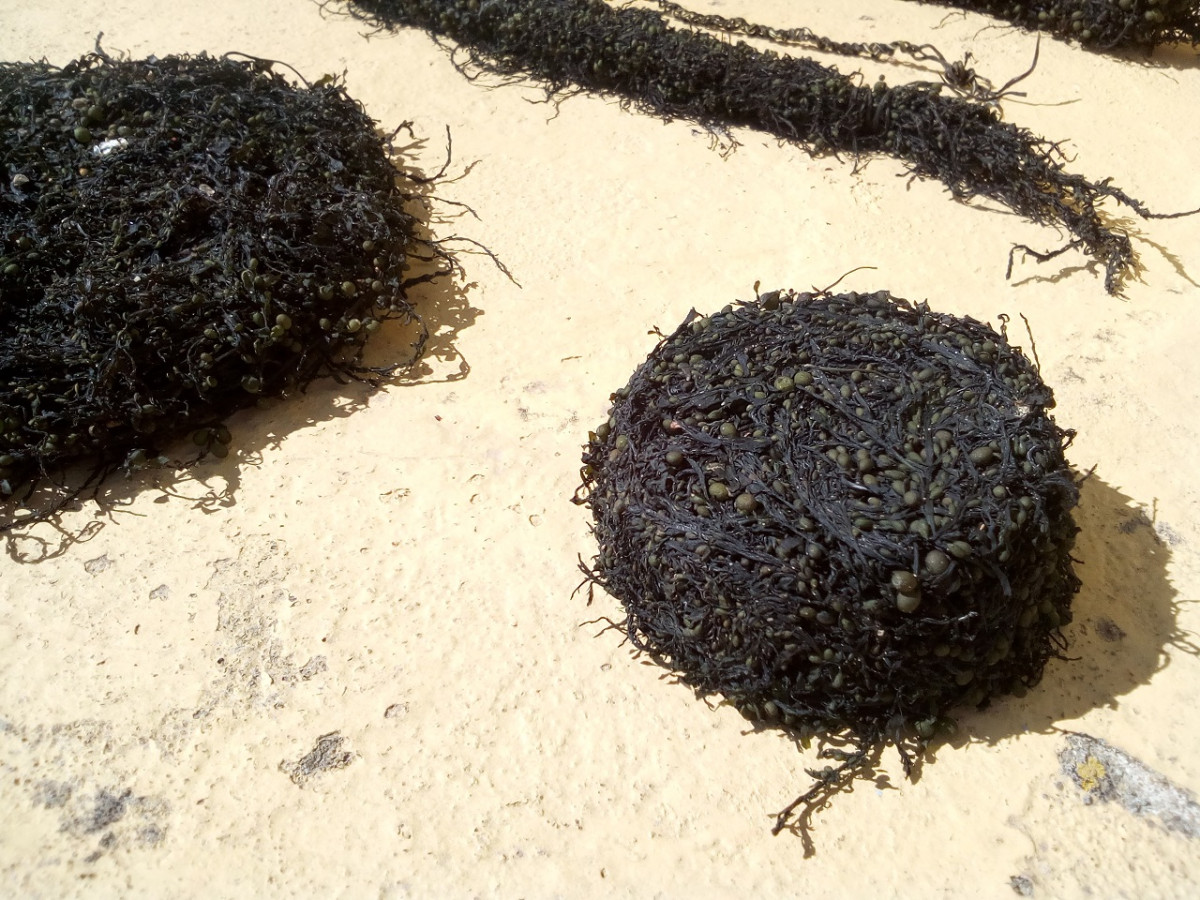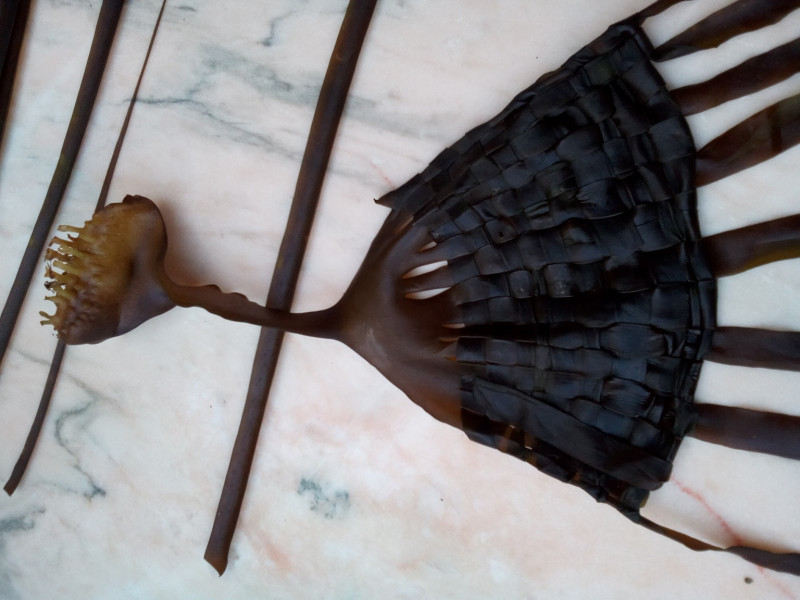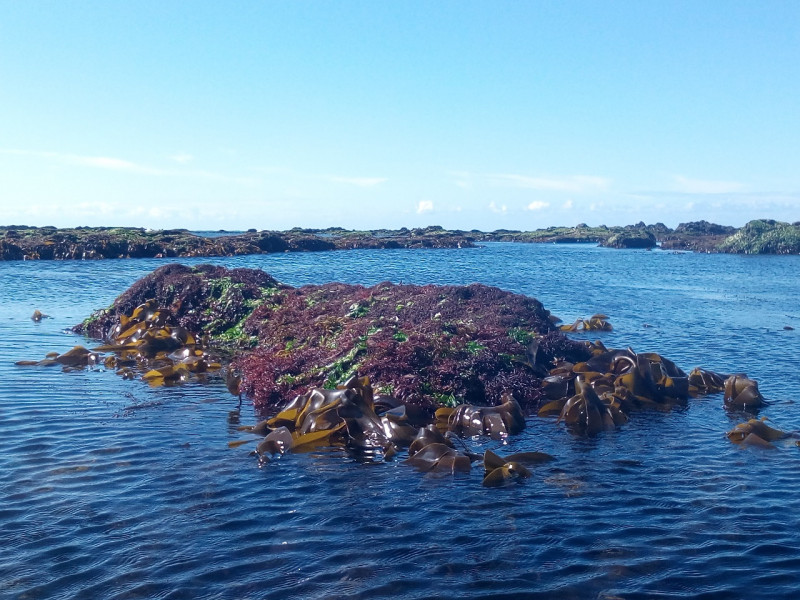
# 0032
Algaetrans
Transforming Practice, Several Things, Common, Gathered, Museum, Polymers, Years
Socio-cultural Data
Historical Uses
After big Atlantic storms on the northern coast of Portugal the kelps and other indigenous seaweeds were harvested directly from the shoreline by the sargaceiras for use as fertilser on the land. This practice is recorded from the 14th century onwards but since the late 1970s has declined as modern, synthetic fertilisers replaced seaweed.
Present Uses
Seaweeds are used widely in the food and cosmetic industries. The mineral composition of seaweed plus its natural alginates that aid in moisture retention, make it an ideal slow release fertilser for bio- or organic agriculture and it is used as an additive in hydroseeding machines for reseeding damaged land or new infrastructure projects. See, for example, Swiss company Verdyol.
Experimental, near future uses
Seaweed farms and seaweed harvesting from natural stands is being explored in Portugal, UK and other European countries with sea borders for further commercial potential. Presently seaweeds are used in food and cosmetics industries but research centres in Portugal in the Universities of Porto, Aveiro and Minho are investigating other possibilities. However, harvesting from natural stands needs to be monitored to ensure habitats are not depleted. CIMAR, University of Porto has a project SWUAV that is mapping the interstitial zone using UAV images taken by drones to check biomass growth of local and invasive species.
Other Fascinating Facts
Sargassum muticum arrived from Japan probably by being pumped out from the bilge of a container ship.
Technical Data
Class of Material
Polymers
Processing methods · Image / Video / Audio (.jpg, .png, .mp4, .mp3 up to 30MB)

Author(s) of process or recipe
Alastair Fuad-Luke
Bio-temporal-geographical Data
Place of Origin · Image / Video / Audio (.jpg, .png, .mp4, .mp3 up to 30MB)

Residence time (How long does the matter/material/artefact stay in an unaltered state in the location/context/system before it decay?)
Years
How does the item affect the environment in which it exists?
Nourish it
Ontological-cosmological Data
liveliness
How would you like to be with this artefact/material/living thing/matter?
to spend time in its habitat to get to know it better
How does transforming this artefact/material/living thing/matter transform you?
it is a quiet process that needs time, so I slow down
What can humans give back to this artefact/material/living thing/matter?
we can give our time to understand what the seaweeds need to flourish